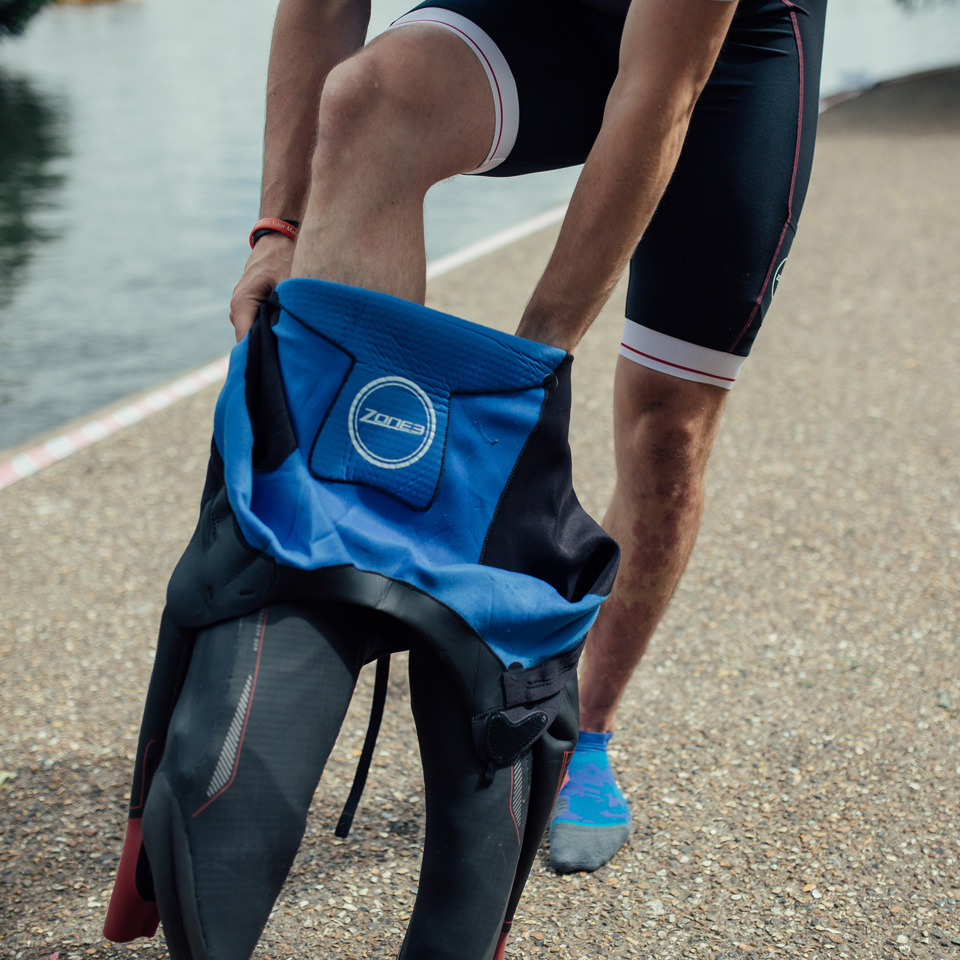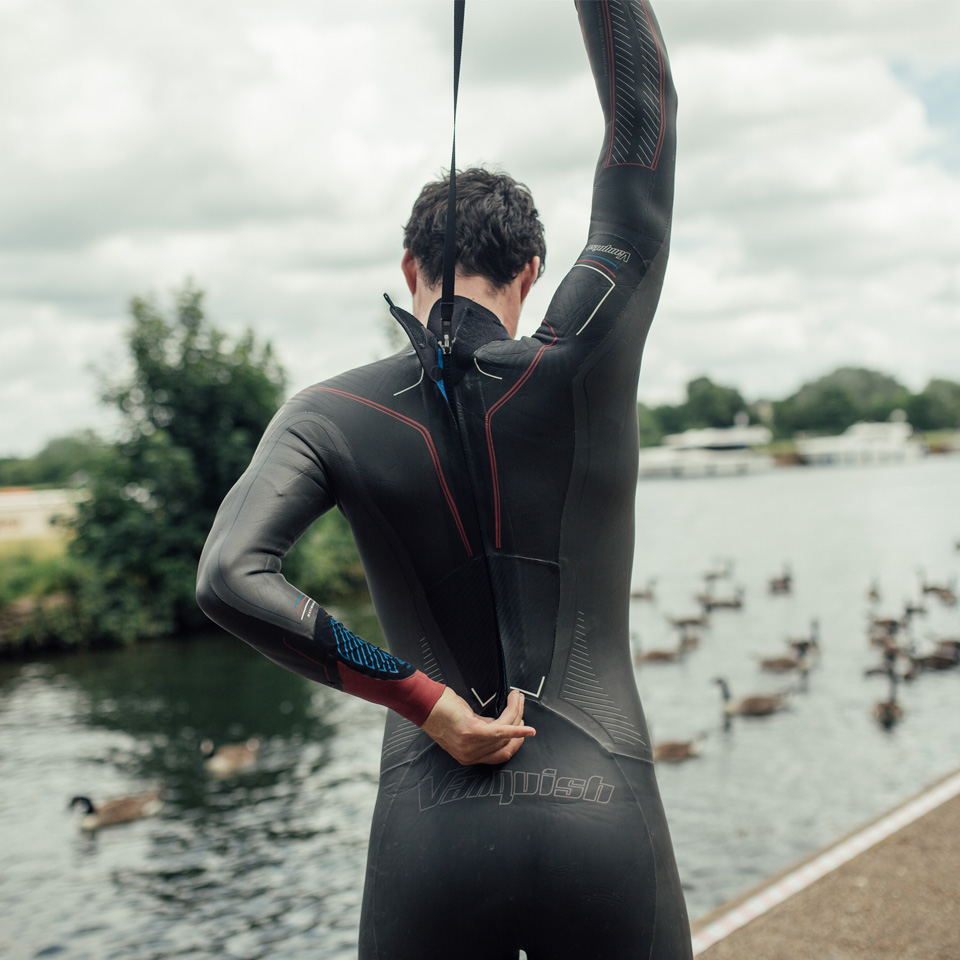
Choosing a Triathlon Wetsuit
Whether you're looking to purchase your first triathlon wetsuit, or wanting to upgrade and enhance your performance in the water, the importance of a sport-specific and well-fitting tri suit should not be overlooked. Originally designed primarily for warmth when diving, surfing and the like, a triathlon or swimming wetsuit is quite different. Although insulation is important, flexibility, hydrodynamics and ease of removal for faster race transitions require consideration. There are tri suits for women and men, and options for beginrners right through to professional triathletes.


Triathlon Wetsuits: The Rules
When racing, it's important to take into account the rules of the British Triathlon Federation, the most important of which are:
- Maximum permitted thickness of neoprene is 5mm
- Minimum water temperature at which triathlon wetsuits are optional is 14°C
- Triathlon wetsuits are deemed unsafe and are banned if water temperature is above 22°C for a 1,500m swim, and above 24°C for an Ironman swim
There are a number of factors to consider when making your choice, and your experience, ability level and budget will impact your decision.
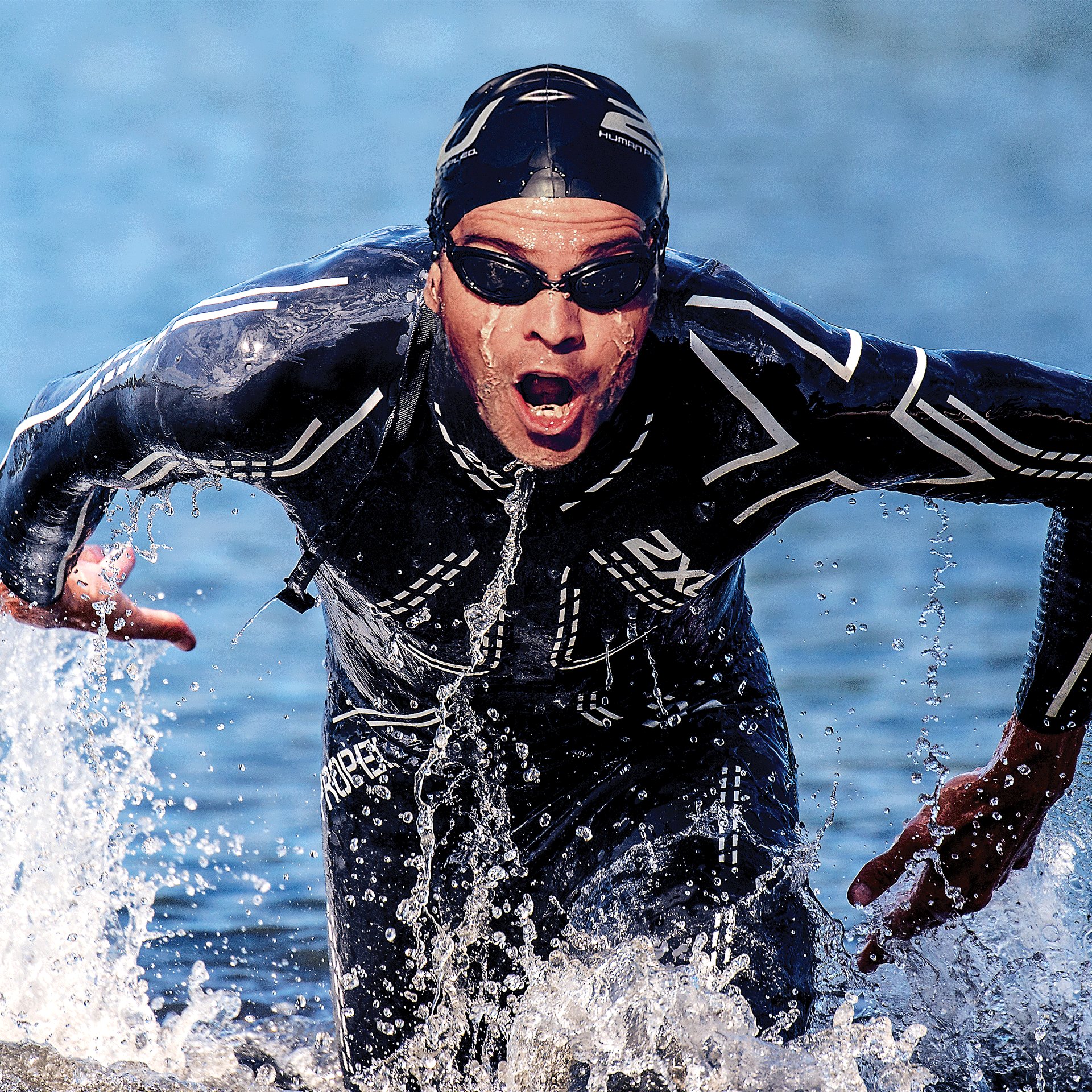
Triathlon Wetsuit Flexibility
Thicker panels cause increased resistance and reduced flexibility. Thinner triathllon wetsuits, designed primarily for experienced swimmers, are more flexible and allow enhanced freedom of movement. The multiple panel construction of a wetsuit takes into account the trade-off between buoyancy and flexibility, and the shoulders and back will feature panels of just 1 - 3mm, while thicker 4 and 5mm panels are restricted to the lower body.

Buoyancy
Body position in the water is key to efficient swimming, and the optimum amount of buoyancy will make you flat, streamlined and faster through the water. Too much buoyancy in the swimming leg, and pressure on your lower back will increase, causing you to lose power in your kick. Too little, and your legs will sink below the water and reduce efficiency. As a rule, more experienced swimmers require less buoyancy and will prioritise flexibility and freedom of movement.
The thickness of a suit will determine buoyancy and looking at the panel construction will help you decide. Panel depths of 5mm and the addition of air cell neoprene in the torso and legs are common in highly buoyant triathlon wetsuits. 3 - 4mm panels indicate a more neutral option.
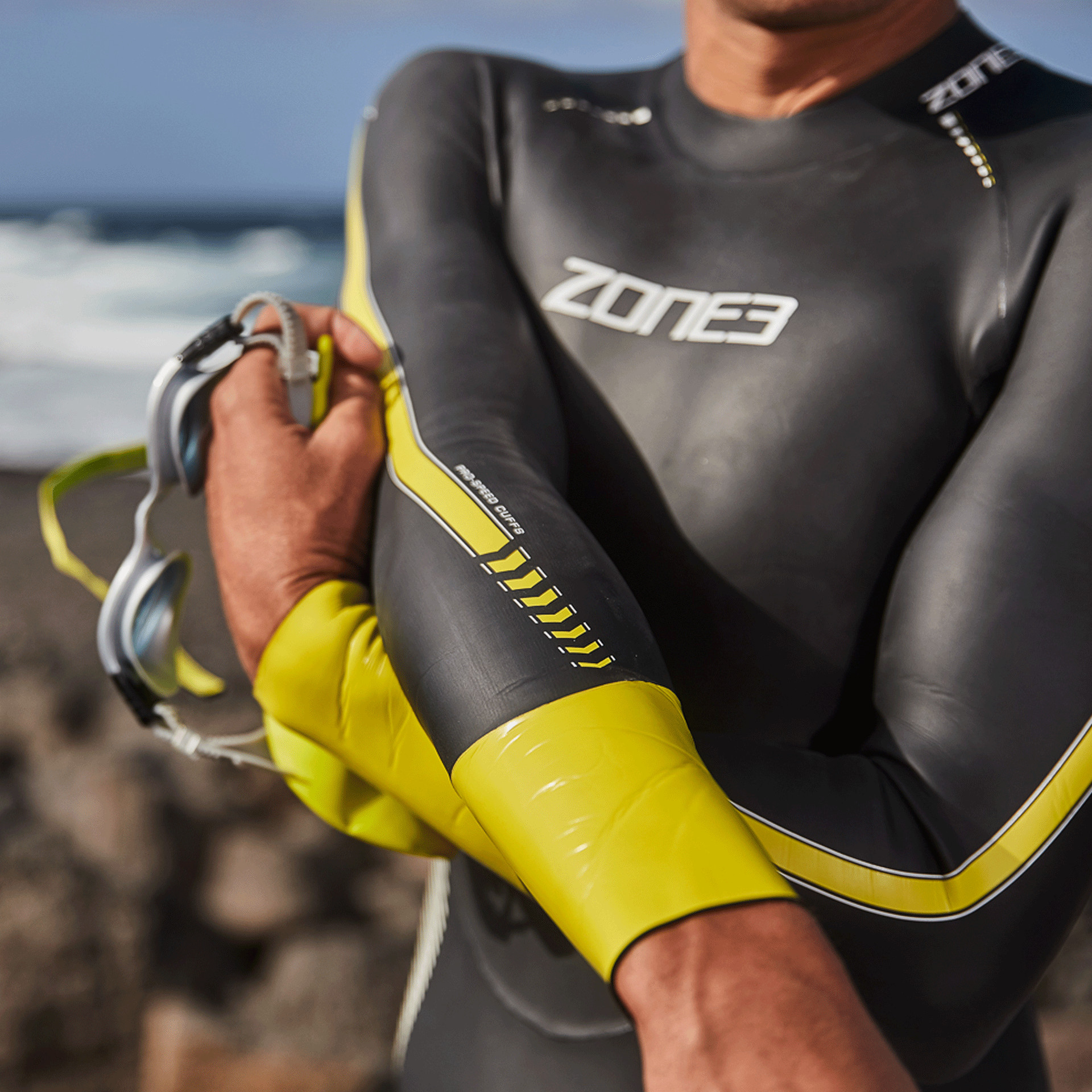
The Perfect Wetsuit Fit
No matter your ability, fit is the most important aspect to get right. A wetsuit is specifically designed to be tight and fit snugly but without restriction. If you're between two sizes, weight is the more critical measurement than height. It's worth trying a range on from different brands such as Orca, 2XU and Zone3. Our experienced fitters in store will be able to help you make the best choice for open water swimming. If this is your first time trying out a wetsuit, it will feel a little strange initially but will mould to your body shape over time.

Wetsuit Coating
All mid-range and above triathlon wetsuits will have an SCS (Super Composite Skin) coating which is added purely for performance benefits. This layer is slippery and improves hydrodynamics so you can swim through the water with reduced friction. Swimmers will find wearing the correct wetsuit will reduce drag and enehance your performance in cold waters. Consider it your second skin!
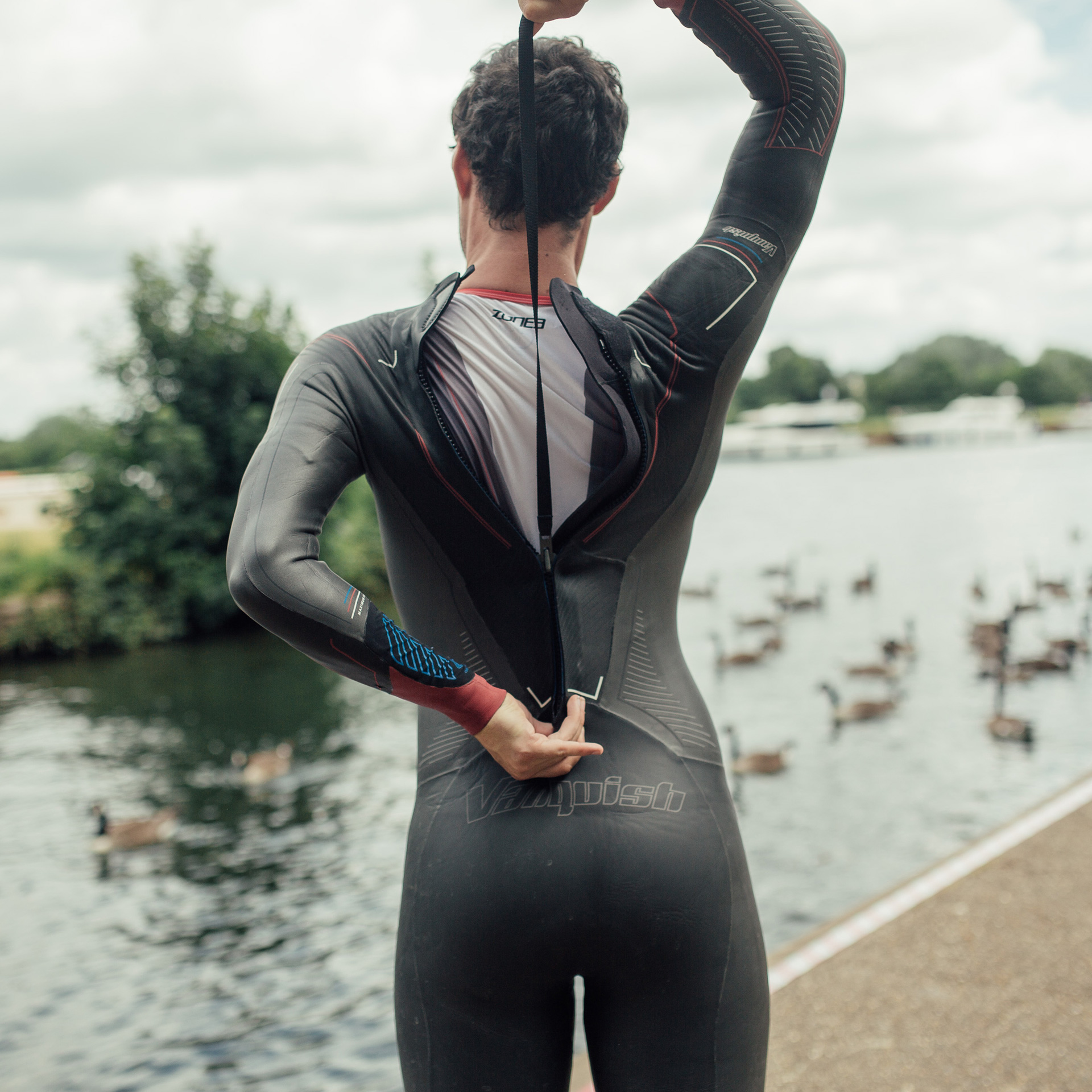
Wetsuit Closure
Traditionally, triathlon wetsuits will zip down to remove, and when fully closed the zip cord is located on your neck. Some top-end racing suits zip up to remove and can make your transition marginally quicker. Breakaway zippers offer the quickest exit, allowing you to pull the cord over your left shoulder so the suit releases in one quick movement. Easy removal is of course crucial for triathletes.
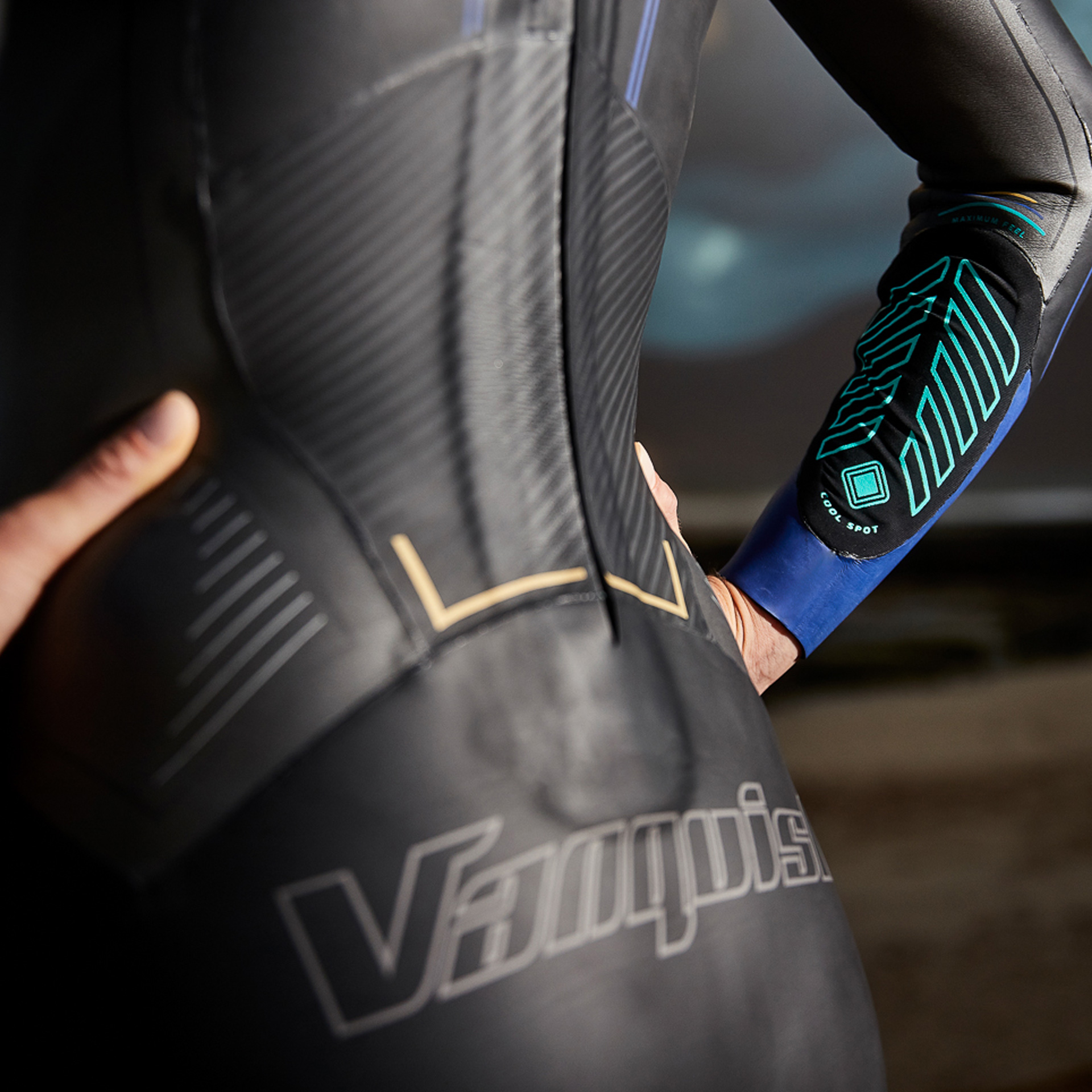
Other wetsuit features for triathletes to look out for
- Catch panels: Increase the surface area on the forearm, with an effect similar to swimming with paddles
- Sensory cool spots:Some triathlon wetsuits have cool spots to provide a better feel of the water on the forearm so you can sense the water with more than just your hands
- Stitch construction: Neoprene is generally glued and then heated, before being stitched at the seams. Extra taping may be added to high-stress points. Some of the top-end suits have an almost seamless construction to reduce chafing and irritation

Caring for your wetsuit
When you invest in triathlon kit, you will want to maintain it so that it provide you with the support and protection you need when partaking in open water swimming. Whether it is a great entry level suit or a premium performance suit - here are some tips to take care of your wetsuit to make sure it helps take care of you in the cold water.
- Avoid using your fingernails when putting on your wetsuit! Nails can easily cut the neoprene and leave small crescent moon shaped cuts - these have the potential to pull into bigger holes
- Avoid tugging on the zip with the cord, the weak part of the wetsuit is at the bottom of the zip at the base of the spine - it can easily rip here - ask someone to zip up the suit for you
- After swimming, rinse off the wetsuit in clean fresh water, leave inside out to dry, and once that side is dry turn it the right way out to dry any excess water from the outside
- Store out of direct sunlight; the sun can degrade neoprene if left exposed for extended periods
- Don’t leave on a hanger for long periods, as this may stretch the neoprene in the shoulders - loosely fold to store
How to put a wetsuit on
1 - Unzip the suit and turn the upper body inside out from inside the crotch - you should leave the arms the right-way out (remember the zip goes on the back)
2 - Start by pulling the legs over your feet while holding on to the inside of the suit and move them up your body as much as possible. Depending on how long your legs are you will show 1 - 15 cm of skin above your ankle. *Tip: Keep your socks on or put carrier bags over your feet to help them slide more easily into the legs of the suit
3 - Once the suit is over your hips, you may need to make further adjustments. Being careful not to damage the neoprene with your fingernails, start down low and work the material up the legs until the lower leg seam is across your knee cap and the suit is snug in the crotch. Take your time with this and do not put your wetsuit on too quickly as it may result in tearing
4 - Once the suit is fitted correctly in the lower body you then can pull it up over your shoulders and arms
5 - Once you have the suit completely on, have someone help you with the zip. If you are uncomfortable with this you can do up the zip yourself with the pull cord. Make sure the inner flap along the zipper is not bunching up or folded over
How Should Triathlon Wetsuit Fit?
1 - Check to ensure the triathlon suit pulls into your lower back and there isn’t a big gap. If there is, try bringing the suit higher up in the crotch and pulling the neckline higher. If there is too much excess fabric in any particular area, the suit may be too big and let water in - something open water swimmers will want to avoid!
2 - Extend your arms from your sides, parallel to the ground. The wetsuit should be close to your armpits and there should also be some small folds on the top of the shoulder. If this isn’t the case, you may need to pull the arms of the suit towards your shoulders. You can do this by extending one arm over your head and carefully sliding the arm of the suit towards your shoulder
3 - Extend your arms in front of your chest, crossed at the wrists. There should be minimal gaping at the neck or billowing in the chest. It is normal for there to be a small amount of space or folds in the wetsuit
4 - If you feel that the neck is uncomfortable; try pulling the suit further up around your middle and especially through the zip. Grab the base of the zip and work any excess material towards the shoulders







